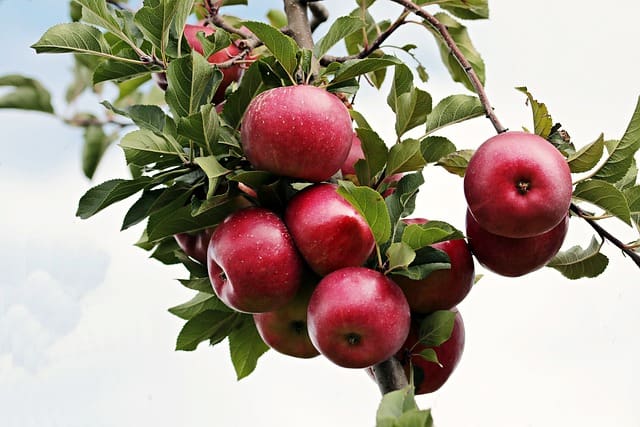Many gardeners will consciously plant particular species that are advantageous to the ecosystem of their entire garden. These are often called “companion plants.”
Overall, the biological process of symbiosis, which occurs when two or more species coexist and benefit from one another’s presence, is at work in this relationship.
Since the goal of apple trees is to produce abundant, nutritious products for you to consume, these companion plants should be considered particularly crucial. For example, if you grow the wrong items, your plants might not be able to produce as much fruit as they might have without them.
Continue reading to learn more about apple tree companion plants, including what the top 10 best apple tree companion plants are, and more.
What Are Considered the Top 10 Best Apple Tree Companion Plants?
Other companion plants suitable for your garden:
1. Chamomile
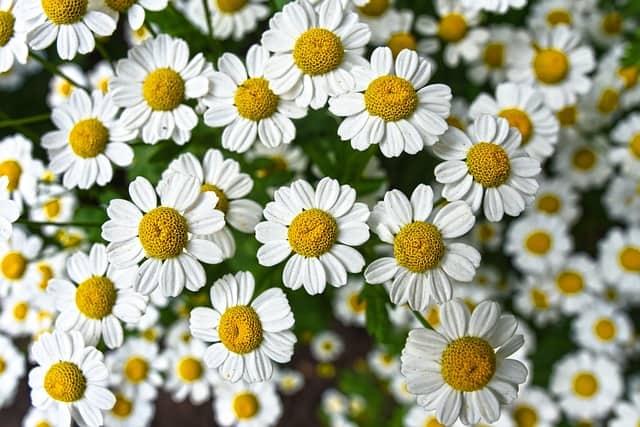
Normally, when people hear the expression chamomile, they think of a bedtime tea- but did you know that this tea originates as a plant that also makes a lovely, delicate blossom?
Due to the fact that the chamomile plant also draws pollinators when it blooms, this plant is considered a fantastic companion for fruit trees. For example, hoverflies and ladybugs are just a few of the insects that the chamomile plant may draw. These pests will consume hazardous insects like aphids.
Overall, when used as a companion plant, chamomile is known to benefit the entire ecosystem in its mission to disperse pollen. In addition, it is quite simple to cultivate. For instance, all you need is a little bit of shade.
2. Nasturtium
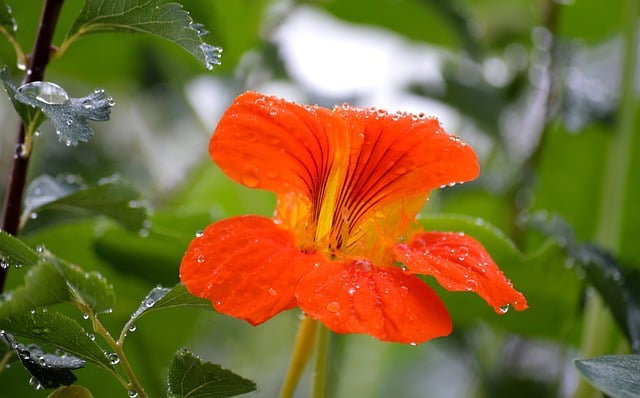
Nasturtiums wide horizontal growth and vibrant red blossoms make it a popular choice for ground cover around apple trees. Additionally, due to the fact that it contains a lot of sucrose, pollinators are completely enamored with it.
Additionally, this plant draws more than just pollinators. For example, nasturtiums are known to repel aphids from other plants and withstand their nuisance. They are also far more resilient than your apple tree and are, therefore, better able to combat these pests.
The best part about this plant is that it also won’t compete with your apple tree for nutrients due to the fact that its roots are shallow.
For example, due to its shallow roots, which limit soil erosion, and its profusion of shade, which lowers evaporation, when used properly, the nasturtium plant is an excellent ground cover that benefits the entire soil system surrounding your apple trees.
3. Comfrey

Comfrey plants are considered another lovely addition to yards that contain apple plants. Not only are comfrey plants beneficial to all surrounding plants, particularly apple trees, but due to all of the advantages they provide, they are also regarded as one of the finest allies for apple trees.
For starters, these plants are classified as skilled weed preventers. They also serve as barriers and prevent weeds from encroaching on their “circle” when planted in a line. In addition to preventing weeds, comfrey plants also add vital minerals to the soil, such as phosphate and potassium, that apple trees require.
Additionally, they deter pests and attract pollinators and insects that devour any pests that do manage to get close to your fruit trees.
Take note, however, that if you choose to use the comfrey plant as a companion plant, you must use caution. After all, these plants spread like wildfire and grow quickly, much like weeds.
Once completely established, each branch also has the potential to develop into a different plant and is exceedingly difficult to eradicate. Nonetheless, many gardeners adore them in spite of their fast development.
4. Lavender
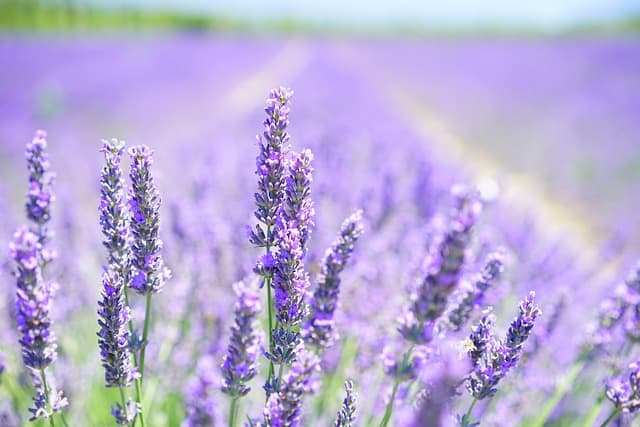
Lavender is a perennial plant that is indigenous to the Mediterranean, making it a drought-resistant plant by nature. This makes it an excellent companion for apple trees.
For instance, many lavender bushes consistently draw hundreds of pollinators, primarily bees. But in addition to naturally deterring pests like snails and slugs, it also produces fragrant, oily blossoms.
Lavender is also frequently used as a fragrance-enhancing component in handmade soaps, lotions, and other products. In certain dishes, it’s also used as a garnish. This makes lavender a fantastic plant with several uses.
5. Yarrow
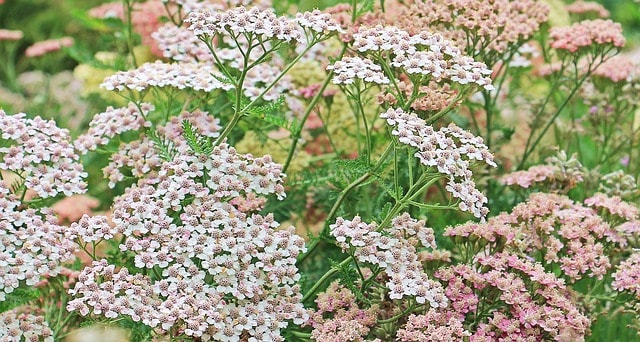
As a perennial blooming plant native to temperate regions, yarrow thrives in environments similar to apple trees. This plant offers several natural treatments, may grow up to three feet tall and draws pollinators.
The best combination for yarrow is apple trees, natural grasses, butterfly milkweed, purple coneflower, and other grassland plants.
Overall, yarrow is considered an extremely popular plant among most gardeners due to the fact that it is typically low maintenance and reasonably easy to cultivate.
6. Dandelions
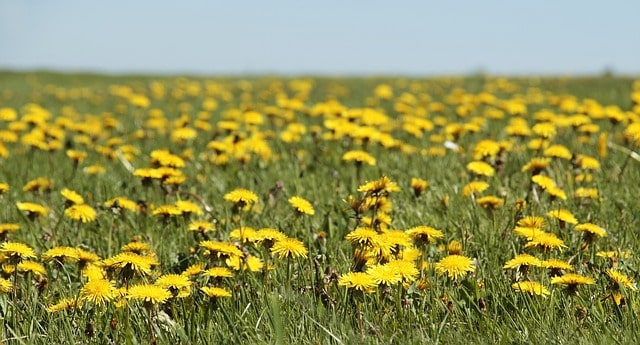
One of the most common weeds known to man is the dandelion. Not only are these plants easy to identify to their bright yellow blooms, but interestingly enough, they also have a variety of other uses.
For example, due to the fact that dandelions are one of the earliest plants in ecological succession, we can find them growing everywhere. In other words, this plant develops because it seeks to repair damaged soils and exploits them.
As a result of this trait, dandelions’ roots are excellent at fixing nitrogen in the soil, much like comfrey’s roots are- making them excellent companion plants.
Like comfrey, dandelions also work as excellent mulch because they naturally shield the soil from erosive forces and hot temperatures. As an added benefit, dandelion blossoms and leaves are delicious and are frequently used in many handmade items.
Overall, all of these factors combine to make dandelions an excellent plant to grow beside apple trees.
7. Onions or Garlic Plants

As members of the same plant family, onions, and garlic both have stronger scents than most other plants. More precisely, this is probably due to the fact that these plants both contain sulfur- which is present in them naturally.
This means that planting either garlic or onions next to your apple trees will help ward off pests like aphids, mites, and maggots as well as larger predators- like rabbits and deer. This is due to the fact that these bugs’ keen senses do not find their strong sulfur smell or taste appetizing.
Sulfur is not only excellent at repelling pests but is also used as a natural anti-bacterial and fungicide. In fact, some deterrents are even produced from garlic because of how powerful the aromas of these plants are.
8. Rosemary
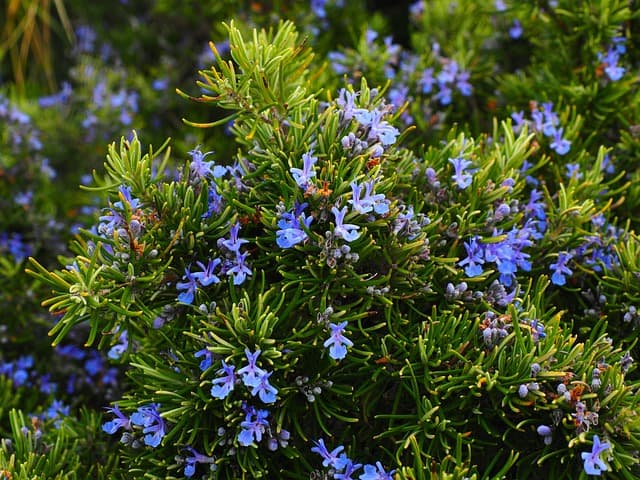
Rosemary is another excellent option when looking for a companion plant for your apple tree. Not only does this plant have a wide variety of benefits, but it also gets along swimmingly well with lavender.
The small yet attractive blossoms of rosemary are what draw pollinators from all over. This plant also has several homesteading uses, particularly in cooking.
Short roots are also found in this plant, which is advantageous since deeper-rooted plants may be able to compete with the apple tree’s shallow roots.
9. Chives
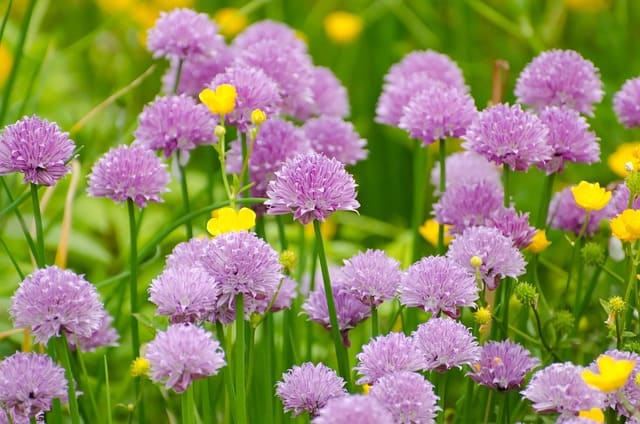
Chives, like garlic and onions, are prized for their ability to repel some insects due to the presence of sulfur compounds in the leaf. Take notice that bees appreciate this plant’s flowers as well, giving you yet another valuable pollinator for trees and plants. Cooking with the stalks is also an option.
Chives will also keep away various pests, including aphids, much like other allium family members do. Once in bloom, chives also draw a lot of beneficial pollinators and require very little upkeep.
Chives also appear to be able to prevent apple scab and discourage borers if it is planted close to apple trees.
10. Wildflowers
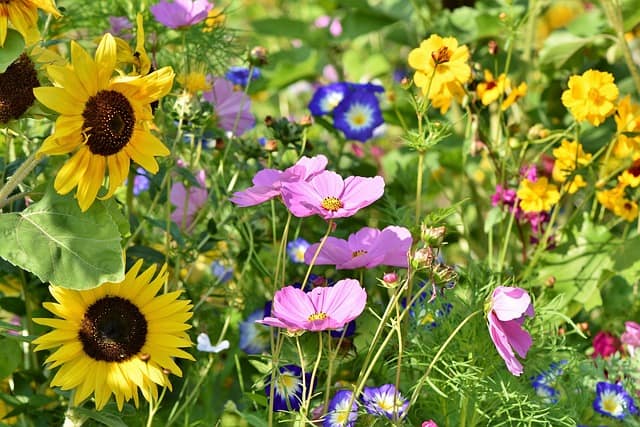
Last but not least, why not plant wildflowers around your apple trees? Not only do these flowers benefit your apple tree’s ecosystem, but they can also make your garden appear fresh and colourful.
Wildflowers are a wonderful addition to any landscape, particularly if they are within the apple trees’ viewing distance. After all, these flowers are known to draw in a wide array of pollinators. Wildflowers not only draw a lot of pollinators, but also beneficial insect predators like birds, ladybugs, and helpful wasps.
In order to increase the likelihood that pollinators will visit both the wildflowers and the blossoms on your apple tree, this should ideally be no farther than 50 feet away.
In addition to offering pollinators a nice mix of nectar and pollen, which they may utilize as energy and nourishment, the wildflower’s array of colours will also attract eyes.

Hey, I’m Lisa and I’ve been an avid gardener for over 30 years. I love writing, talking and living in the garden! Feel free to connect with me on my socials below

